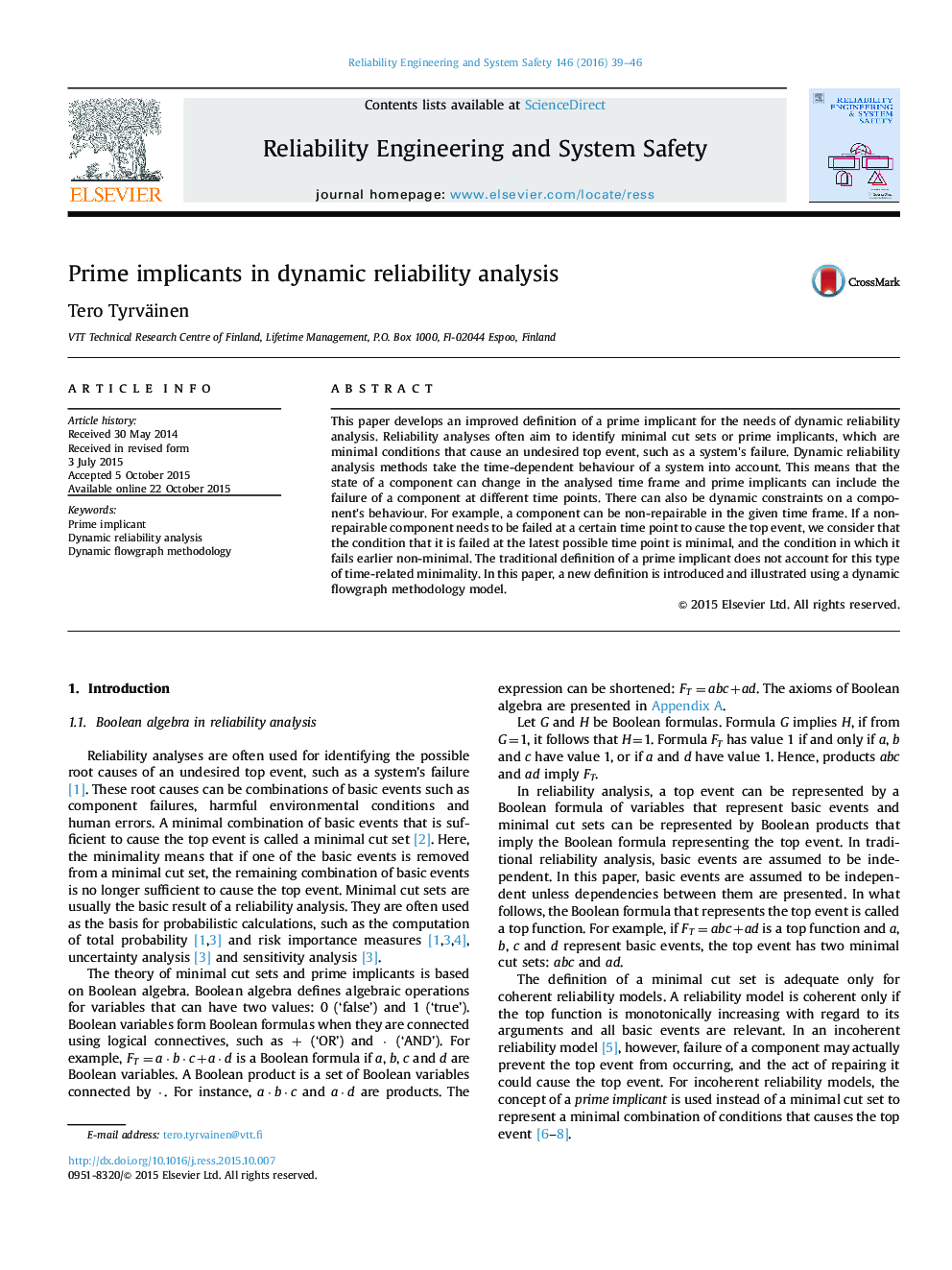| Article ID | Journal | Published Year | Pages | File Type |
|---|---|---|---|---|
| 807695 | Reliability Engineering & System Safety | 2016 | 8 Pages |
•A new definition of a prime implicant is developed for dynamic reliability analysis.•The new definition takes time-related minimality into account.•The new definition is needed in dynamic flowgraph methodology.•Results can be represented by a smaller number of prime implicants.
This paper develops an improved definition of a prime implicant for the needs of dynamic reliability analysis. Reliability analyses often aim to identify minimal cut sets or prime implicants, which are minimal conditions that cause an undesired top event, such as a system׳s failure. Dynamic reliability analysis methods take the time-dependent behaviour of a system into account. This means that the state of a component can change in the analysed time frame and prime implicants can include the failure of a component at different time points. There can also be dynamic constraints on a component׳s behaviour. For example, a component can be non-repairable in the given time frame. If a non-repairable component needs to be failed at a certain time point to cause the top event, we consider that the condition that it is failed at the latest possible time point is minimal, and the condition in which it fails earlier non-minimal. The traditional definition of a prime implicant does not account for this type of time-related minimality. In this paper, a new definition is introduced and illustrated using a dynamic flowgraph methodology model.
